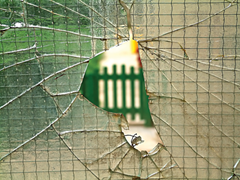The cost of crime
 Nearly £2.9 billion is spent on dealing with crime, when it could be put to better use. Peter Cheney unpacks the figures.
Nearly £2.9 billion is spent on dealing with crime, when it could be put to better use. Peter Cheney unpacks the figures.
Society pays almost £2.9 billion annually to cover the cost of crime, a Department of Justice study reports. The official analysis of crime’s financial impact is thought to be the first of its kind in Northern Ireland.
Crime’s most obvious cost is the spending needed to solve crimes and punish offenders for their consequences. The less obvious costs come from replacing stolen goods, dealing with the physical or psychological consequences for victims, or installing security systems to avoid crime in the first place.
Two papers were commissioned by the NIO during direct rule: an assessment of the overall costs by Oxford Economics, and a further assessment of the impact on government departments by York University’s Professor Roger Bowles. Both were published for discussion in November.
All figures covered 2006-2007. The overall sum (£2,881.3 million) broke down into:
• £1,663.2 million for crimes against individuals;
• £624.4 million for crimes against businesses;
• £593.6 million for crimes against government.
Violent, sexual and drug offences accounted for nearly 75 per cent of the costs of crime against individuals. Fraud and criminal damage were the main costs borne by businesses.
Overall, the cost of crime was split three ways:
• 62 per cent of costs from its consequences;
• 32 per cent as response costs (e.g. investigations);
• 6 per cent as anticipation costs (i.e. crime prevention).
The document mostly focused on the first category, which included stolen or damaged property, physical and emotional injury, loss of output, victim support, and the immediate health service or ambulance costs.
Costs for the most violent crimes were estimated by using the same methods for used after road accidents e.g. how much someone would be ‘willing to pay’ for that not to have occurred, or the work that someone could have done had he or she not become a victim.
Most violent crime costs were due to physical or emotional injuries (£91.1 million), followed by loss of output (£27.1 million). The same two categories accounted for most sexual crime costs: £281.4 million for injuries and £40.4 million for lost output. Injuries from drug offences cost £163.9 million.
Replacing stolen or damaged property after domestic burglaries cost £16.5 million. Muggings resulted in fewer property costs (£700,000) but the physical or emotional cost was much higher: £40.6 million. The same was true for criminal damage against individuals: £20.3 million for injuries.
Almost all business crime costs were due to stolen or damaged property (£417.7 million). Hijackings, though, often resulted in employees taking long-term stress leave.
The fraud bill against government (£275.1 million) included well-organised fuel, alcohol and tobacco smuggling, around £40 million in benefit fraud and around £500,000 defrauded inside government departments. Belfast had one of the worst records for TV licence evasion among UK cities: 2,800 cases in one six-month period.
Response costs totalled £915 million, split between the following categories:
• £630.2 million for crimes against individuals;
• £170.7 million for crimes against government;
• £114.1 million for crimes against business.
In official language, the criminal justice agencies are usually defined as the Department of Justice, PSNI, Prison Service, Court Service, Public Prosecution Service, Youth Justice Agency and Forensic Science Northern Ireland.
However, the authors argued that others’ work should also be acknowledged, including investigations by HM Revenue and Customs (HMRC), the Serious Organised Crime Agency (SOCA) and the Northern Ireland Audit Office. HMRC, for example, employed 160 officers to tackle fuel smuggling alone.
The report’s main drawbacks are its reliance on estimates and what are now four-year old statistics. The research was new so had to use a combination of reported crime figures, Northern Ireland Crime Survey results and calculations based on the region’s proportional size within the UK.
Most departments held no information on the cost of crime, so estimates for crimes against government were mostly based on crimes against business and the public sector’s share of gross value added.
“While the stark headline figure of £2.9 billion will alarm many, the real issue is: ‘What can government, the business community and wider society do to reduce crime?’” said David Ford. As Minister, he said he was trying to drive costs down where possible e.g. in legal aid reform or reducing the cost of prisons.
The report, he noted, did not cover how Northern Ireland was perceived after civil unrest e.g. its international image after the Ardoyne riots, but this could only have a negative impact.
“Crime cannot be an issue solely for the criminal justice system,” the Minister remarked. “It impacts on everyone in society and in these difficult economic times, every pound spent of crime deprives society of money which could be spent more productively on their behalf.”
£2,881m
Overall cost of crime
£869.1m
Cost to property
£745.6m
Cost of injury
£143.6m
Lost economic output
£3,558
Average cost of business burglary
| Crimes against: | |||
| Class | Individuals | Business | Government |
| Violence against the person | 130.8 | – | – |
| Sexual offences | 331.0 | – | – |
| Burglary | 27.6 | 39.8 | 14.7 |
| Robbery | 59.9 | 39.5 | 14.5 |
| Theft | 35.0 | 67.2 | 24.8 |
| Fraud and forgery | 18.1 | 109.8 | 275.1 |
| Criminal damage | 28.2 | 129.3 | 47.7 |
| Drugs, offences against the state and others |
346.7 | 39.8 | 14.6 |





